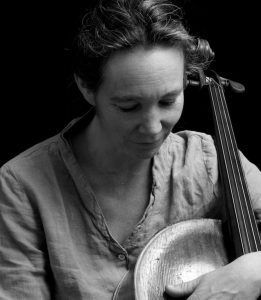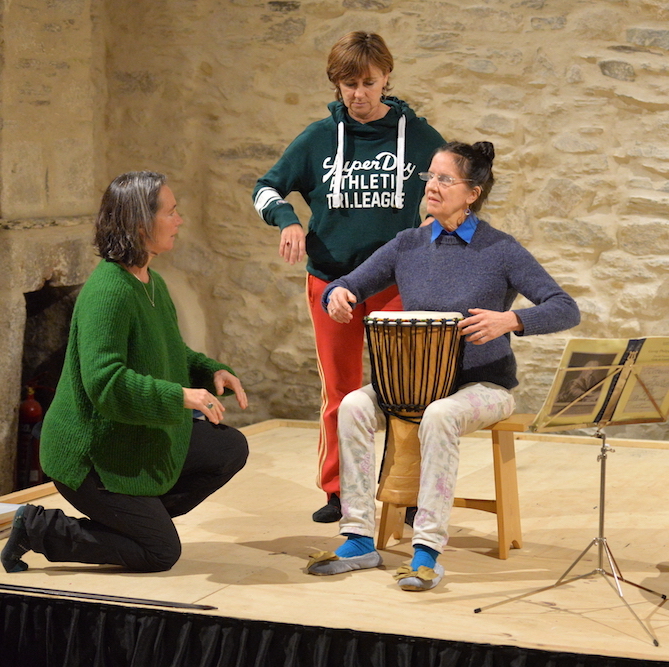Power versus Strength
‘When you have attained complete relaxation, you are able to be flexible and agile in your movements.’ – Zen master Yang Cheng Fu
“To relax is not to collapse, but simply to undo tension….There is nothing to be done. It is not a state of passivity but, on the contrary, of alert watchfulness. It is perhaps the most ‘active’ of our attitudes, going ‘with’ and not ‘against’ our body and feelings.” – Vanda Scaravelli – Awakening the Spine.
Building strength through force only promotes the shortening of muscles as they contract, causing fatigue and strain. That strain goes against rather than with our body. Developing power is another matter entirely. Power is a natural state. It involves movement generated from our core, a great deal of relaxation and a perfect relationship between tension and release.
Moving from Our Core
“Every form of skilled or powerful movement on terra firma illustrates that athletic movement works best when power flows freely through the core.” – Terry Laughlin, Total Immersion Swimming
The terms can be vague and we often use them incorrectly. Some speak of muscles, some of bones and others of energy centres, but I think most traditions agree that the area around our centre of gravity is key to all movement. Just as we do not learn to sing but only articulate with our lips, teeth and tongue, we do not initiate sound with our fingers. Moving from the core is not only efficient but it also unites both sides of the body in one gesture, a gesture that comes from our response to the music.
When we walk, we move our centre of gravity forward, throwing ourselves off balance, and the released leg swings forward. The whole body right down to the toes respond to this shift in weight. The swing of the arm round the torso in bowing is no different. Movement happens through release as the feet sitting bones lead the shift of weight from left to right. The arm falls to restore equilibrium and the fingers follow. If the shoulder; elbow or wrist are blocked (so often the case in our obsession with having a straight bow) this swing is destroyed, we lose our power and must resort to strength.
As the body is constantly moving in spirals, with the shift of weight from one side to another comes a slight rotation of the torso. The cello pedagogue, Steve Doane, talks in his ‘Owl’ exercise about sweeping one’s gaze from left to right as one crosses from the A to the C string or shifts up the fingerboard. This works because we do not shift our gaze just with our eyes or even just our head. The movement of the eyes and head originate at our centre, and it is the imperceptible rotation of the torso that causes the ease of movement. Doane says:
“This swing supports the shifting motion by communicating energy from the feet through the hips to the back and arms. It is an essential part of your dynamic cellistic balance.” – ‘Cello Ergonomics
If we try the string crossing exercise with the opposite core movement – turning from right to left as you cross from A-C strings on the cello – we see how restricted our natural power is.
Tensegrity
Initiating movement from our core does not mean hurling ourselves about. In fact, by making sure the big cogs power the little cogs, movement becomes more efficient. A gesture takes time to flow from the core through to our limbs, and as one movement is being completed, so another is being prepared, causing a healthy tension. This tension is called tensegrity.
Tens(ion) plus (int)egrity.
“Tensegrity is a structural principal of geometry where shapes benefit from strength and flexibility due to the push and pull of their parts.” – Will Nagel of tensegritymovement
Obviously, we need muscle tone (tension) to move. We need it to sit on a chair, and certainly to play an instrument, but we also need release. Life and music are a constant play between tension and release. The push and pull of a wave, a dominant chord resolving to the tonic, the in and the out-breath, the up and the down bow all express this perfect relationship.
The next Breathing Bow retreat will be held in Provence with Ruth Phillips and Jane Fenton. 16-20 October 2018.
_________________________________________________________________
 Ruth Phillips was Born in London in 1964 and studied at the Yehudi Menuhin School with William Pleeth, and in Dusseldorf with Johannes Goritzki. In 1990, Ruth left a successful career with the Chamber Orchestra of Europe to continue her studies with Timothy Eddy at the State University of New York where she received her Masters’ degree in performance.
Ruth Phillips was Born in London in 1964 and studied at the Yehudi Menuhin School with William Pleeth, and in Dusseldorf with Johannes Goritzki. In 1990, Ruth left a successful career with the Chamber Orchestra of Europe to continue her studies with Timothy Eddy at the State University of New York where she received her Masters’ degree in performance.
Described as a ‘consummate coach’, Ruth draws on her training as a Voice Movement Therapist, and on many years’ work with yoga, mindfulness, meditation and Non-Violent Communication. Her generous spirit and organic approach to playing has helped people all over the world suffering from tension and stage fright find presence, ease and inspiration. Ruth runs individual Breathing Bow retreats from her home in Provence and has run workshops at the European String Teacher’s Association conference, the Royal Northern College of Music and the Royal Scottish Academy of Music. With her colleagues, Alexander teacher and cellist Dale Culliford, and yoga teacher and cellist Jane Fenton, Ruth runs group Breathing Bow retreats throughout Europe.
Ruth has an active life as a solo, orchestral and chamber musician on both baroque and modern cellos. Passionate about all types of music, she enjoys regular collaborations with folk singers, The Brothers Gillespie, and the Indian cellist Saskia Rao. She is co-principal cellist of Opera Fuoco in Paris. Ruth’s writing on breath and performance has appeared in many publications including The Strad and BBC music magazines, and her book, ‘Cherries from Chauvet’s Orchard’ was shortlisted for the Guardian women’s memoir award. She was involved in John Beder’s 2016 documentary on stage fright, ‘Composed’, and her playing of Bach is featured on the soundtrack.
http://thebreathingbow.com









